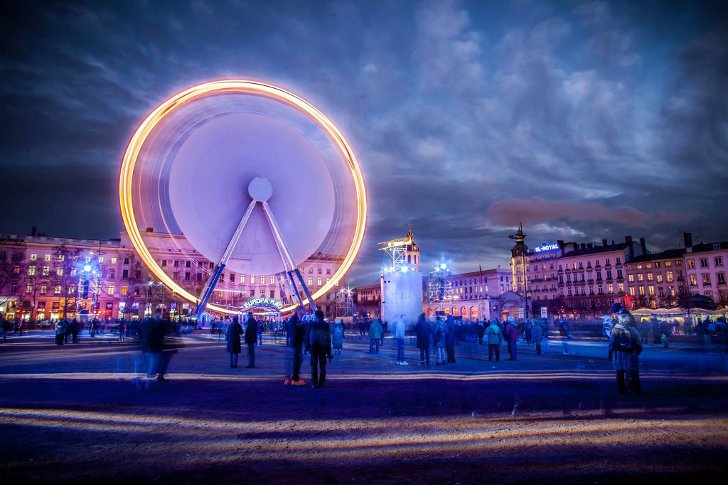The origins of the Festival of Lights in Lyon date back to 1643 when Lyon was struck by a plague epidemic. On December 8 (the feast of the Immaculate Conception) the municipal councilors promised to pay tribute to the Blessed Virgin Mary if the town was spared. Lyon was consecrated to the Virgin Mary, and a solemn procession has been held in the name of Mary on December 8 ever since.
The procession was transformed into a popular festival in 1852. Joseph-Hugues Fabisch crated a statue of the Virgin Mary which was erected next to the Basilica of Fourvière. The inauguration ceremony was due to take place on September 8, 1852 (the feast of the Nativity of Mary). However, the flooding of the River Saône prevented the ceremony from being held, and the archbishop moved the inauguration of the statue to December 8.
However, event two months later the weather didn’t favor the residents of Lyon. On December 8, 1852, the city was struck by a storm. The master of ceremonies decided to postpone the celebrations to the following Sunday. But the skies cleared by nighttime, and the people of Lyon spontaneously lit candles and sparklers, descended on the streets, and went to the Fourvière hill to honor the Blessed Virgin Mary.
Since then, the people of Lyon have been decorating their windows and balconies with candles in glass jars every December. Over the years, the religious celebration has transformed into a mostly secular festival and an outstanding urban event. In 1989, the first Lighting Plan was approved, enabling lighting over 250 sites throughout the city. The four-day Festival of Lights was officially inaugurated in 1999.
The Lyon Festival of Lights has quickly become a major tourist attraction. In 2012, it was attended by about 4 million tourists from around the globe, which made it one of the four largest mass events in the world, alongside Oktoberfest in Munich, the Carnival in Rio de Janeiro, and the Kumbha Mela mass pilgrimage in India.
Every year around December 8 thousands of people, local and tourists alike, enjoy spectacular light installations, light shows, performances, and the traditional procession. During its entire existence, the festival was canceled only twice: owing to the nationwide state of emergency in the wake of the November 13 terrorist attacks in Paris in 2015 and due to the coronavirus pandemic in 2020.

Photo © François BARRILLON




